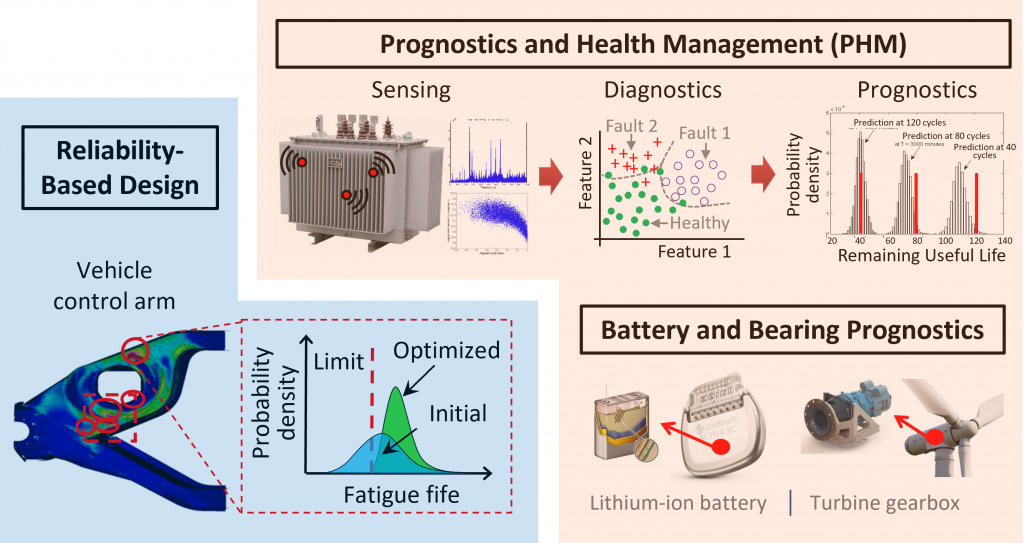Welcome to the System Reliability and Safety Laboratory!
About Us
The System Reliability and Safety Laboratory (SRSL) is a research laboratory in the Department of Mechanical Engineering at Iowa State University. Our research work focuses on developing new engineering design and failure prognostics methodologies for the design of safe, long-lasting, and low-cost engineered systems. We have developed new simulation-based design methods and sensor-based failure prognostics techniques that enable the design of engineered systems with reduced life-cycle costs and improved reliability and safety. Click here for a detailed description of our focused research areas.
An Overview of Research Work at SRSL
